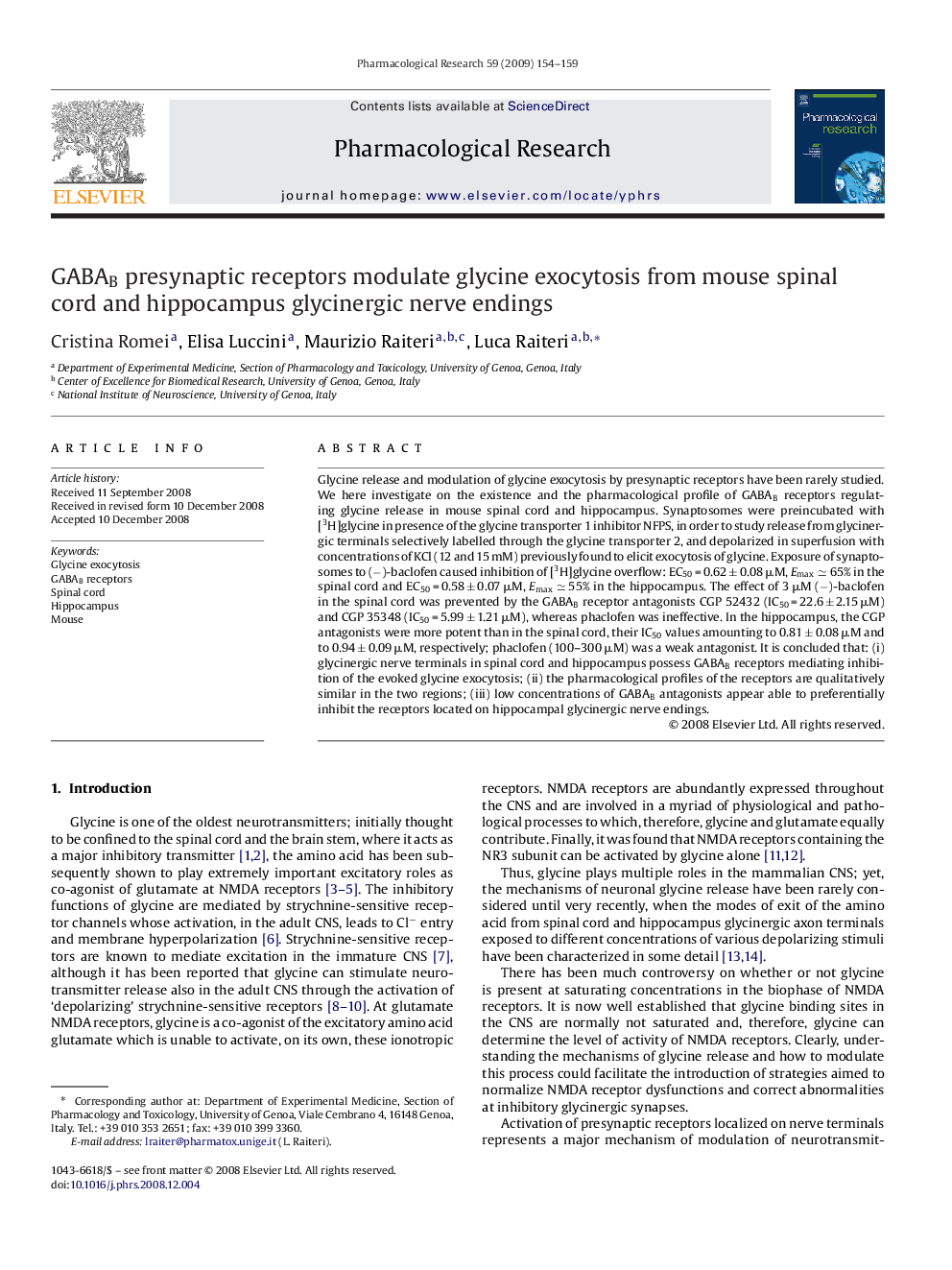| Article ID | Journal | Published Year | Pages | File Type |
|---|---|---|---|---|
| 2562564 | Pharmacological Research | 2009 | 6 Pages |
Abstract
Glycine release and modulation of glycine exocytosis by presynaptic receptors have been rarely studied. We here investigate on the existence and the pharmacological profile of GABAB receptors regulating glycine release in mouse spinal cord and hippocampus. Synaptosomes were preincubated with [3H]glycine in presence of the glycine transporter 1 inhibitor NFPS, in order to study release from glycinergic terminals selectively labelled through the glycine transporter 2, and depolarized in superfusion with concentrations of KCl (12 and 15 mM) previously found to elicit exocytosis of glycine. Exposure of synaptosomes to (â)-baclofen caused inhibition of [3H]glycine overflow: EC50 = 0.62 ± 0.08 μM, Emaxâ65% in the spinal cord and EC50 = 0.58 ± 0.07 μM, Emaxâ55% in the hippocampus. The effect of 3 μM (â)-baclofen in the spinal cord was prevented by the GABAB receptor antagonists CGP 52432 (IC50 = 22.6 ± 2.15 μM) and CGP 35348 (IC50 = 5.99 ± 1.21 μM), whereas phaclofen was ineffective. In the hippocampus, the CGP antagonists were more potent than in the spinal cord, their IC50 values amounting to 0.81 ± 0.08 μM and to 0.94 ± 0.09 μM, respectively; phaclofen (100-300 μM) was a weak antagonist. It is concluded that: (i) glycinergic nerve terminals in spinal cord and hippocampus possess GABAB receptors mediating inhibition of the evoked glycine exocytosis; (ii) the pharmacological profiles of the receptors are qualitatively similar in the two regions; (iii) low concentrations of GABAB antagonists appear able to preferentially inhibit the receptors located on hippocampal glycinergic nerve endings.
Related Topics
Health Sciences
Pharmacology, Toxicology and Pharmaceutical Science
Pharmacology
Authors
Cristina Romei, Elisa Luccini, Maurizio Raiteri, Luca Raiteri,
